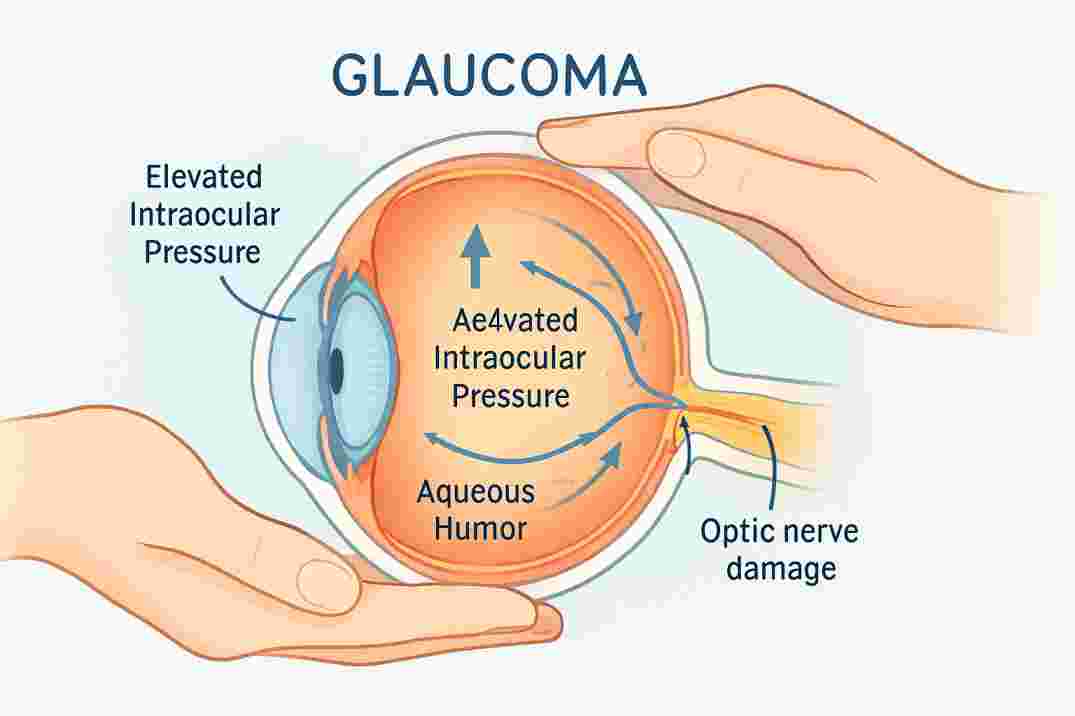Dry Eye Treatment Guide | What You Need to Know | Seattle
Bottom Line Up Front: Dry eye affects an estimated 20 million diagnosed Americans, with recent studies suggesting up to 150 million Americans experience frequent or occasional dry eye symptoms. This condition can significantly impact your daily comfort and vision quality. The good news? With proper diagnosis and personalized treatment at Cannon EyeCare in Seattle, most patients find significant relief and can return to comfortable, clear vision.
Understanding Dry Eye: More Than Just “Dry Eyes”
What you need to know about dry eye is that it’s a chronic, multifactorial condition affecting the tear film that covers and protects your eyes. It’s not simply about having “dry” eyes—it’s a complex condition where your tears either don’t work properly or your eyes don’t produce enough quality tears to maintain healthy vision.
At Cannon EyeCare, we understand that dry eye can significantly impact your daily life, from difficulty reading to discomfort during computer work. What you need to know about dry eye starts with understanding that this condition affects the feeling that there’s something in your eye that won’t come out.
The Science Behind Your Tears
Your tear film consists of three essential layers working together:
Outer Lipid Layer: Produced by meibomian glands in your eyelids, this oily layer prevents tears from evaporating too quickly.
Middle Aqueous Layer: The watery portion containing nutrients and oxygen for your cornea.
Inner Mucin Layer: Helps tears spread evenly across your eye’s surface.
When any of these layers becomes imbalanced, dry eye symptoms develop.
Recognizing Dry Eye Symptoms: What Your Eyes Are Telling You
Many patients visiting Cannon EyeCare are surprised to learn that dry eye symptoms extend far beyond simple dryness. Here’s what to watch for:
Primary Symptoms
- Burning or stinging sensations in your eyes
- Gritty feeling, as if sand is in your eyes
- Blurred vision that improves with blinking
- Eye redness and irritation
- Excessive tearing (your body’s attempt to compensate for dryness)
- Difficulty wearing contact lenses
- Eye fatigue, especially after screen time
When Symptoms Occur
Morning symptoms: The classic symptom is when you wake up, your eyes feel dry. If you don’t have that healthy oil layer protecting the water layer of your tears, when you wake up in the morning, your eyes can feel irritated, and they can be red.
Evening symptoms: Often worsen after long days of computer work or in dry environments.
Environmental triggers: Air conditioning, wind, airplane travel, and heated indoor spaces.
What Causes Dry Eye? Understanding the Root Issues at Cannon EyeCare
The Three Main Categories
At Cannon EyeCare, we’ve identified three main causative factors for dry eye: a lack of tears/dehydration, poor quality tears due to oil gland dysfunction, and exposure. Understanding what you need to know about dry eye begins with recognizing which category affects you most.
1. Insufficient Tear Production (Aqueous Deficiency)
- Age-related changes: Being older than 50. Tear production tends to diminish as you get older.
- Hormonal changes, particularly in women during menopause
- Autoimmune conditions like Sjögren’s syndrome, rheumatoid arthritis, or lupus
- Medication, including antihistamines, blood pressure medications, and antidepressants
2. Poor Tear Quality (Evaporative Dry Eye)
Evaporative dry eye means that you don’t have enough oil in the tears. When most people think about dry eye, they think about not having enough water in their tears, which is an aqueous deficiency dry eye, but evaporative dry eye is more prevalent.
Meibomian Gland Dysfunction (MGD) is the leading cause, where oil glands in your eyelids become blocked or produce poor-quality oil.
3. Exposure Issues
- Incomplete eyelid closure during sleep
- Reduced blinking from prolonged screen time
- Environmental factors like wind, dry air, or air conditioning
Seattle-Specific Considerations for Dry Eye
Seattle’s unique climate presents particular challenges for dry eye sufferers. What you need to know about dry eye in Seattle includes understanding how the city’s windy conditions, seasonal dryness, and indoor heating systems can exacerbate symptoms. Many Cannon EyeCare patients find their dry eye symptoms worsen during certain seasons or when transitioning between outdoor and indoor environments.
The Impact of Modern Life on Dry Eye
Digital Eye Strain and Reduced Blinking
Looking at screens certainly can worsen dry eye symptoms. We don’t blink as much when we are focusing on a screen, and this can worsen dry eye. The average American now spends approximately 7 hours and 3 minutes daily looking at screens, significantly reducing blink rates and contributing to tear film instability.
This increased screen time represents a dramatic shift from previous years and helps explain why dry eye symptoms are becoming more prevalent, especially among younger demographics. Recent studies show that 41% of American teenagers spend more than 8 hours per day on screens, setting the stage for the earlier onset of dry eye symptoms.
Hormonal Changes and Women’s Health
It affects predominantly women, especially as they approach menopause and then after menopause. Testosterone is a key regulator of the meibomian glands. Women have their highest levels of testosterone when they are in their 20s. By the time they’re in their 40s, it has decreased by 50%.
This hormonal decline explains why many women first experience dry eye symptoms in their 40s and 50s.
Professional Diagnosis: What to Expect at Cannon EyeCare
Comprehensive Dry Eye Evaluation at Cannon EyeCare
Dr. Mark Cannon brings personal experience to dry eye management, having mild dry eye himself. At Cannon EyeCare Seattle, we offer medical eye exams (billed to medical, not vision insurance) for patients suffering from dry eye symptoms, including burning, gritty, or irritated eyes. Our goal is to restore eye health while improving comfort and vision.
What you need to know about dry eye evaluation at Cannon EyeCare is that we take a comprehensive approach to identify the root cause of your symptoms.
Advanced Diagnostic Testing
Our comprehensive evaluation includes:
Tear Film Assessment: Measuring tear production quality and quantity.ty Meibomian Gland Imaging: Evaluating oil gland function. Corneal Surface Examination: Checking for damage or inflammation.n Lifestyle and Environmental Review: Identifying Contributing Factors
Insurance and Accessibility at Cannon EyeCare
Dry eye evaluations are covered under medical insurance (not vision plans). Cannon EyeCare accepts Premera, Regence, Blue Cross/Blue Shield, and other regional medical insurers, making expert dry eye care accessible to Seattle-area patients. What you need to know about dry eye treatment costs is that most patients find their evaluation and initial treatments are covered by their medical insurance.
Treatment Options: From Simple to Advanced
First-Line Treatments
Artificial Tears: The most common treatment for mild dry eye is a type of eye drop called artificial tears. You can get these eye drops without a prescription.
Preservative-free options are recommended for frequent use (more than 4 times daily).
Warm Compresses and Lid Hygiene: Essential for managing meibomian gland dysfunction. Heat will soften the oils, allowing for easier release from the meibomian glands. Studies have proven that meibomian secretions melt at 32 – 45°C (89.6 – 113°F).
Prescription Treatments
When over-the-counter options aren’t sufficient, prescription medications can provide significant relief:
Anti-inflammatory Drops: Including cyclosporine (Restasis) and lifitegrast (Xiidra). Corticosteroid Drops: For short-term inflammation control.l Newer Options: Including perfluorohexyloctane (Miebo) and varenicline nasal spray (Tyrvaya)
Advanced Therapies
Punctal Plugs: Tiny devices that block tear drainage to keep natural tears on the eye longer
Intense Pulsed Light (IPL) Therapy: Originally used in dermatology, IPL therapy has become a game-changer for treating dry eye caused by meibomian gland dysfunction. Light pulses reduce inflammation and improve gland function.
Radiofrequency Therapy: Gently stimulates meibomian glands to improve oil production
Scleral Contact Lenses: For severe cases, these specialized lenses create a moisture reservoir on the eye
Prevention and Lifestyle Management
Environmental Modifications
Humidify Your Environment: Especially important during Seattle’s dry winter months. Protect Your Eyes: Use wraparound sunglasses in windconditionsts Take Screen Breaks: Follow the 20-20-20 rule (every 20 minutes, look at something 20 feet away for 20 seconds)
Nutritional Support
Omega-3 Fatty Acids: Recent comprehensive research shows mixed but promising results for omega-3 supplements in dry eye management. A 2023 systematic review and meta-analysis found that omega-3 fatty acids consistently alleviated dry eye symptoms, particularly at high doses, with prolonged intake, and with increased EPA levels. However, the landmark DREAM study showed no significant benefit from omega-3 supplements for moderate to severe dry eye disease compared to placebo.
The current evidence suggests omega-3 may be most beneficial as part of a combination therapy and for certain patient populations, particularly those with mild symptoms or specific inflammatory markers.
Adequate Hydration: Essential for overall tear production. Vitamin A-Rich Foods: Support tear gland health
Workplace Wellness
For Seattle’s many knowledge workers and tech professionals:
- Position computer screens slightly below eye level
- Use a humidifier in your workspace (aim for 40-60% humidity)
- Take regular eye breaks during long tasks
- Consider computer glasses with an anti-reflective coating
- Follow the 20-20-20 rule: every 20 minutes, look at something 20 feet away for 20 seconds
The Importance of Early Treatment
Untreated, dry eye can lead to permanent tissue changes of the cornea and chronic inflammation of the eyes. If the meibomian glands aren’t able to work for long enough, the glands will atrophy, and it’s difficult for those glands to function again.
Early intervention at Cannon EyeCare helps prevent:
- Corneal damage and scarring
- Chronic inflammation
- Worsening symptoms over time
- Permanent meibomian gland loss
Recent Advances in Dry Eye Research
Breakthrough Treatments for 2025
The field of dry eye treatment continues to evolve rapidly. Recent advances include:
Hormone-Based Therapies: Research is exploring testosterone replacement therapy for meibomian gland dysfunction. Biologics and Regenerative Medicine: Including autologous serum drops made from patients’ blood.. Advanced Imaging: Better diagnostic tools for early detection and monitoring
Understanding Inflammation’s Role
Modern research emphasizes dry eye as an inflammatory condition, not just a lubrication problem. This understanding has led to more targeted anti-inflammatory treatments and better long-term outcomes.
Living Well with Dry Eye: Patient Success Stories at Cannon EyeCare
At Cannon EyeCare, we’ve helped thousands of Seattle-area patients regain comfortable vision. Dry eye treatment is typically very effective and can help you feel much better in a short amount of time. What you need to know about dry eye treatment success is that most patients see improvement through personalized care plans.
Most patients see improvement through:
- Personalized treatment plans addressing their specific type of dry eye
- Combination therapies targeting multiple contributing factors
- Ongoing support and monitoring for optimal results
When to Seek Professional Help
Schedule an evaluation if you experience:
- Persistent symptoms lasting more than a few days
- Symptoms interfering with daily activities
- Eye pain or significant discomfort
- Changes in vision quality
- Symptoms worsening despite over-the-counter treatments
If you’re having symptoms such as dryness, irritation, extra tearing, and burning when you open your eyes, you should have a dry eye evaluation, but ideally, you should be having a comprehensive eye exam every one to two years.
Your Partner in Dry Eye Management: Cannon EyeCare
Dr. Mark Cannon and the team at Cannon EyeCare understand that dry eye is more than just an inconvenience—it can significantly impact your quality of life. What you need to know about dry eye care at Cannon EyeCare is that our comprehensive approach combines:
- Thorough diagnostic evaluation to identify the root cause of your dry eye symptoms
- Personalized treatment plans tailored to your specific dry eye needs and lifestyle
- Advanced treatment options when conservative dry eye measures aren’t sufficient
- Ongoing support to ensure long-term dry eye management success
Taking Action: Your Next Steps for Dry Eye Relief
If you’re experiencing dry eye symptoms, don’t wait for them to worsen. Dry eye is a chronic condition, and it can become quite serious if left untreated! Getting a dry eye evaluation at Cannon EyeCare means learning what’s causing your issue, so that we can work with you to get to the root of your dry eye.
What you need to know about dry eye treatment is that early intervention leads to better outcomes and prevents complications.
Ready to find relief from dry eye?
Contact Cannon EyeCare today to schedule your comprehensive dry eye evaluation.
Our convenient University Village location serves patients throughout the Seattle metro area, and our medical-focused approach ensures your dry eye treatment is covered by your medical insurance.
FAQs
-
Dry eye is caused by reduced tear production, poor tear quality, or rapid tear evaporation. Aging, medications, health conditions, and environmental factors can all contribute




